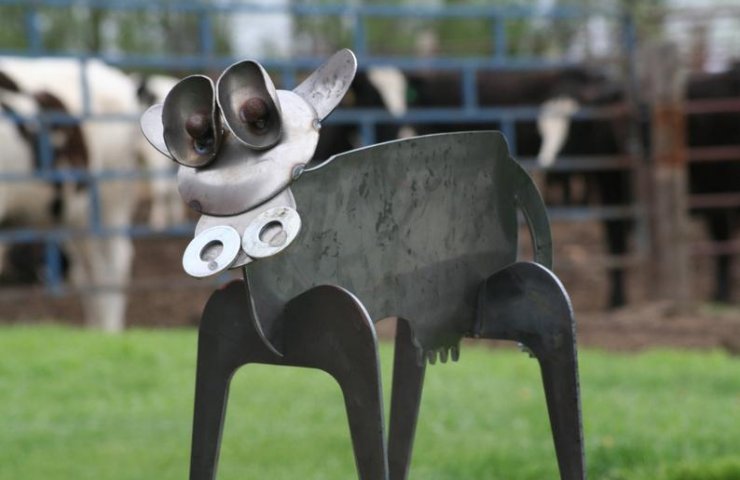What is “decarbonization”? It is an approach to manufacturing processes that aims to reduce human influence on the climate. It can be both momentary and gradual: working out industry by industry, process by process, to reduce greenhouse gas emissions as close to zero as possible. Some solutions to the problem are familiar: switching power plants to renewable sources and filling roads with electric vehicles.
But if you look at agriculture, which accounts for 25% of emissions, along with cement and steel, which account for 14%, the solution is not so obvious.
Cement
- Sources: Manufacturing the main ingredient in cement, called clinker, involves heating limestone in a kiln where the carbon in the stone combines with oxygen and is released as CO 2 . Even more carbon is released if the heat comes from fossil fuels.
- Solutions: some companies are working to reduce the amount of clinker used, while others are testing substitutes, including fly ash, residues left in the chimneys of coal-fired stoves; slag from iron production; and hemp mixed with lime.
- Obstacles: Regulators are very careful when approving alternatives to the substance that strengthens most of the world's buildings. Some options can be up to three times more expensive than conventional cement.
- Long-term perspectives. Cement production is expected to increase by a quarter by mid-century. Reducing carbon emissions depends on improved energy efficiency and a shift to cleaner fuels. But these moves can only hurt: The International Energy Agency says the decarbonized cement industry will rely heavily on carbon capture technologies, which are currently too expensive for mainstream use.
- A bright spot: Brazilian cement is one of the cleanest in the world thanks to the presence of pozzolana, a volcanic material that can replace clinker.
Steel
- Sources: Iron ore is refined in traditional blast furnaces by heating with coke, a refined form of coal. Coke releases carbon monoxide, which absorbs oxygen from iron ore, creating cast iron and carbon dioxide.
- Solutions: European steelmakers are testing a switch to hydrogen as a binder. The hydrogen produced by renewable energy could also be used to ignite stoves. Increasing the use of recycled steel is considered critical to reduce emissions as it is much less energy intensive.
- Obstacles: The Chief Technology Officer of ArcelorMittal, the world's largest steel producer, believes the switch to hydrogen could double the cost of steel. The upfront investment required for change may require significant government assistance.
- Long-term perspectives. Global steel demand is expected to grow 50% between 2019 and 2050 as cities grow. The IEA says that the carbon intensity of steel - the energy required to produce a certain amount - should fall 1.9% every year until 2030; between 2010 and 2016 the average decline was 1.4%.
- A bright spot: A pilot project called Carbon2Chem, developed by the German steel company Thyssenkrupp AG, uses carbon dioxide and other gases from the steelmaking process as feedstock for the production of chemicals, reducing overall emissions.
Agriculture
- Sources: The widespread practice of burning stubble after harvest releases carbon dioxide, while heavy use of inorganic fertilizers releases methane and nitrous oxide. Destroying rainforests for livestock and agriculture, including growing animal feed, is part of why livestock accounts for 60% of agricultural emissions.
- Solutions: Supply-side steps include improving soil management and developing livestock with digestive systems that produce less methane. On the demand side, lawyers hope to convince people to eat less meat and dairy products and pressure food companies to buy only from sustainable sources.
- Obstacles: Brazilian President Heir Bolsonaro is hostile to measures to reduce deforestation in the Amazon, while poor smallholder farmers dominate food production in Asia, including many refusing to abandon traditional methods.
- Long-term perspectives. With the growing world population and the consumption of more meat in China and other emerging markets as they become more god




